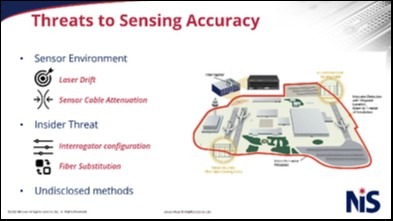Find out why NIS PULSE System is the best fiber optic sensing available.


Fiber Optic Sensing is used across multiple industries to detect everything from leaks in pipelines to network intrusions. Using fiber optic sensing, events of all types can be detected, from alarm notifications sent to stopping harmful activities before they occur. Network Integrity Systems has offered how Fiber Optic Sensing through their PULSE Sensor Verification System can help protect infrastructure from attacks.
According to NIS, the PULSE Sensor Verification System allows users to measure the effectiveness of sensing solutions continually. With the PULSE™ Verifier, user can:
Recently, NIS Vice President of Marketing Dave Cunningham spoke at the Fiber Optic Sensing Association (FOSA) on how the PULSE Sensor Verification System can have automated, continuous verification that the sensor is operating as designed and intended for the life of the system. To watch the entire webinar, visit the link here.
Cunningham has served as a leader in the fiber optics industry for more than 20 years, including the TIA Fiber Optics Tech Consortium, TIA Standards, and the Hotel Technology Next Generation Group organizations. Dave was also the Founding Chairman and President of the Association for Passive Optical LAN. Most recently, Dave was the FOSA Board Chair for 2022. Dave said, “It is exciting to be a part of such a great organization and to work with all the talented people that help execute the FOSA mission.”
Since 2003, Network Integrity Systems has applied its expertise in optical fiber monitoring to prevent physical and cyber attacks on network infrastructure. It provides users solutions to perform continuous analysis of cables, pathways, and points of vulnerability such as maintenance holes, fence lines, and equipment cabinets and look for intrusions that occur as a precursor to a physical, cyber attack (tapping, theft of data) or damage that could degrade network performance or availability.
Those interested in understanding how Fiber Optic Sensing works through Network Integrity Systems are encouraged to visit the link.
